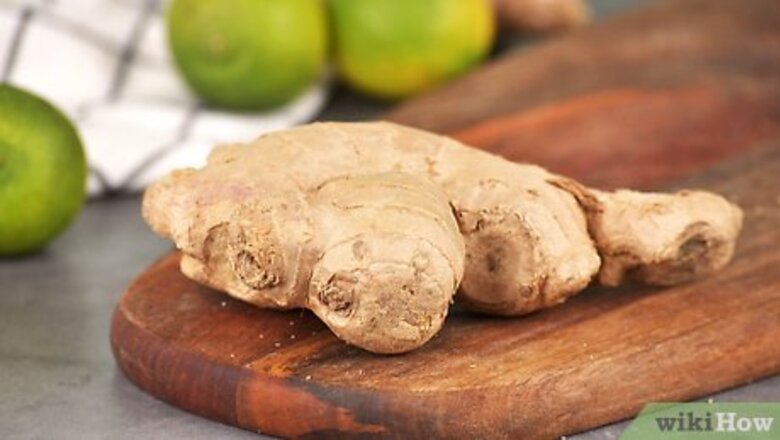
views
Peeling the Ginger
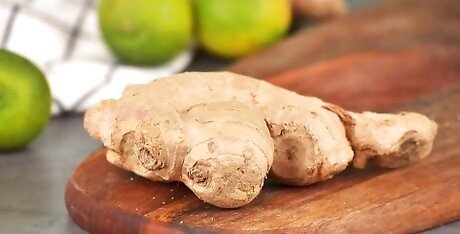
Check the ginger for softness or moistness. Ginger should feel solid and should not have any soft spots. Feel around the root with your hands and look for noticeable spots of rot. Peeled ginger will darken around the edges when it starts to go bad.

Square up the edges using a chef’s knife. Cut off the ends of the root with a sharp chef’s knife. Cutting a little off of each side will make it easier to hold the ginger rather than working with an irregular shape. Try to only cut off a small portion from the edges so you do not waste any of the usable ginger.
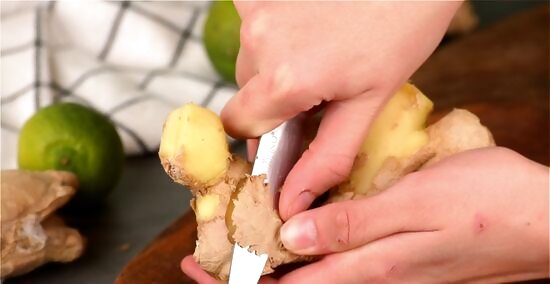
Peel the ginger with a paring knife or vegetable peeler. Stand the ginger on one of its ends, and use a sharp knife or vegetable peeler to remove the rest of the skin. Slice in a downward motion towards the cutting board. Remember to try and remove as little of the skin as possible. Alternatively, you can use the edge of a spoon to scrape the peel off of fresh ginger. This works especially well on the rounded knobs that may be difficult to reach with a knife.
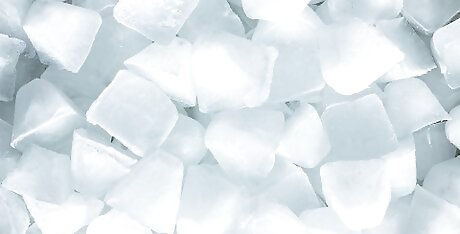
Freeze the ginger so it’s easier to grate. Peeled ginger should be stored in a freezer-safe resealable bag and keeps for 1 week. Frozen ginger is easier to grate since it hardens up. Unpeeled ginger keeps in the freezer for up to 3 months. Allow it time to thaw before peeling it. Peeled ginger can be grated as soon as it’s pulled out from the freezer.
Using a Grater
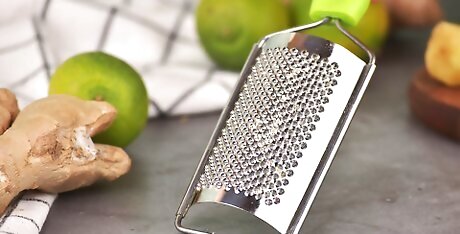
Find a grater with a large surface area and fine etched holes. It doesn’t matter if it is handheld or a box grater. Avoid graters that have metal nubs or teeth because they will be inefficient and overall more time-consuming. These graters can be bought at many big-box or cooking specialty stores.
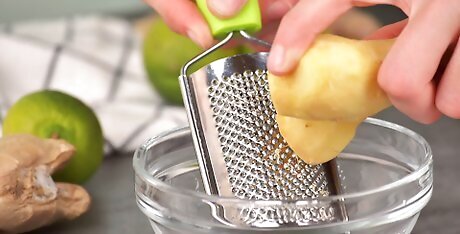
Hold the peeled ginger root so the fibers are perpendicular to the grater. The fibers in ginger run from the top to the bottom of the root. If you grate from the top or the bottom, it’s likely your grater will clog. By holding the side against the grating teeth, you’re able to avoid the fibers getting caught. If the teeth of the grater do clog, run it under warm water and use a sponge to rub the residue away.
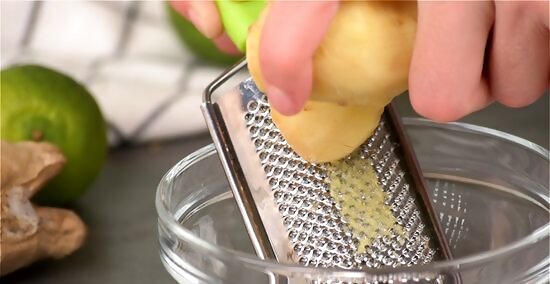
Drag the root against the grain of the grater. In short back and forth motions, rub the ginger across the metal teeth. Apply even pressure with your fingers against the grater so the ginger shreds evenly. Use a big enough piece of ginger so you don’t accidentally cut your hands on the grater’s teeth. It takes 1 ¼ oz (35.4 g) of raw ginger to make 1 tbsp (14.3 g) of grated ginger.
Grating with a Fork
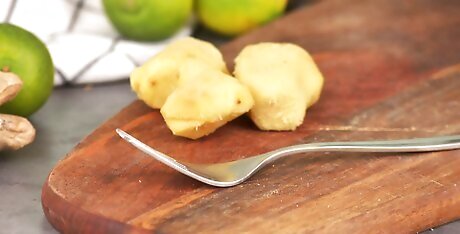
Lay a fork down on the cutting board. Place a metal fork on your cutting board with the tines facing up. Hold the handle of the fork with your non-dominant hand so it does not move. Use a fork with smaller tines for smaller pieces of ginger.
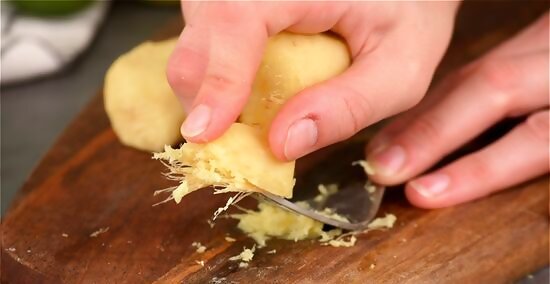
Rub peeled ginger across the tines of the fork. Hold the ginger with your dominant hand. Keep constant and even pressure on the ginger as you drag it across the edge of the fork. You’ll see strands of minced ginger falling from the knob you are grating.
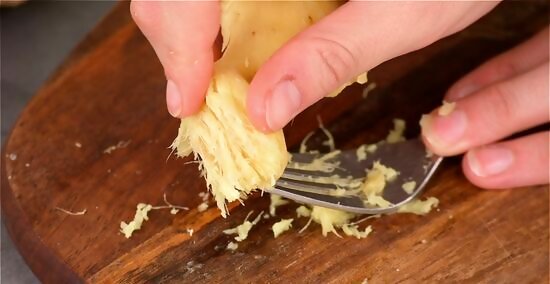
Pull the ginger in all directions. This helps you work around the interior fibers and frees up the most amount of usable ginger. Continue grating the ginger on the tines of the fork until you have the amount that you need for your recipe.


















Comments
0 comment